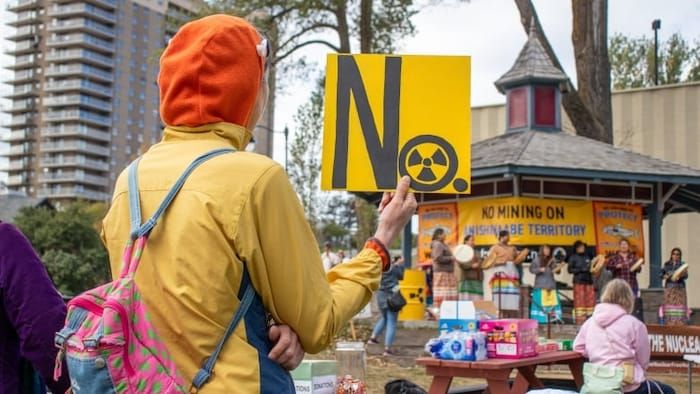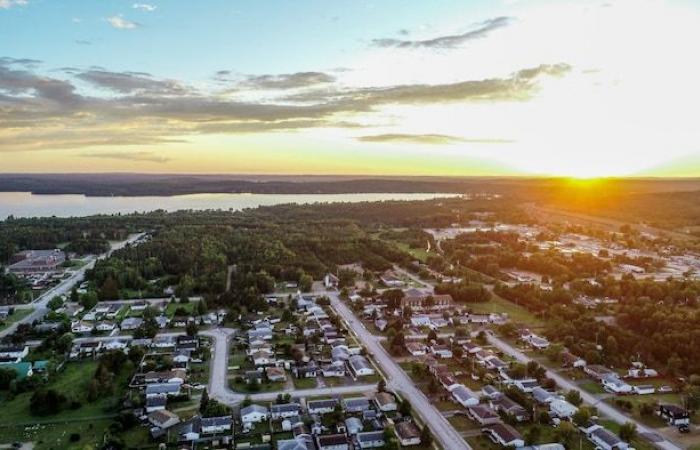The Nuclear Waste Management Organization (NWMO) has selected the Wabigoon Lake Ojibwe Nation and Ignace Township as host communities for the future site of Canada’s deep geological repository for spent nuclear fuel from nuclear reactors in Canada.
The Ignace region was one of two places vying to host the nuclear tomb. The other was South Bruce, in southwestern Ontario.
These communities were mostly in favor of hosting the site, after more than a decade of discussions.
Start of widget. Skip the widget?End of widget. Return to start of widget?
In a press release released Thursday morning, the president and CEO of the SGDN, Laurie Swamideclared that he this is a historic moment
.
This project will solve an environmental problem and support Canada’s climate change goals
she says, adding that the decision for the site is the result of a selection process based on consent.
This is confirmed by Lise Morton, vice-president of site selection for SGDNwhich adds that the selected host communities are “informed and consenting”. She adds that the selected site meets rigorous safety standards, a sine qua non criterion for establishing the Canadian plan for the management of irradiated nuclear fuel.
We know that the rock in Northern Ontario is very good for a project like this.[…] We can develop a rigorous security site there.
Open in full screen mode
Plan of the deep repository of Canada’s deep geological repository for used nuclear fuel.
Photo: Nuclear Waste Management Company
In a press release, the mayor of the canton of Ignace, Kim Baigrie, affirms that her community is honored and very proud
to have been chosen alongside the First Nation of Wabigoon Lake to accommodate this first deep geological repository.
Ignace Township residents spoke out loud and clear this year and strongly indicated our overall support
indicates the mayor, adding that it is a extremely positive news
for both communities and the entire region.
Open in full screen mode
Ignace is a town in northwestern Ontario with a population of just over 1,000.
Photo: Canadian Nuclear Waste Management Organization
In a statement, the chief of the Ojibwe Nation of Wabigoon Lake, Clayton Wetelainenindicates that the community anticipates the continuation of the work as this project enters the regulatory assessment phase
.
Our members have clearly expressed their desire that we have the courage to move on to the next phase of this project
he adds.
Opposition still present
Brennain Lloyd, alliance volunteer We the Nuclear Free North (free translation: We, the nuclear-free North), does not hide his disappointment.
The SGDN argues that it has just selected a willing host community. This is not the case.
As proof, she suggests that the chiefs of the First Nations of Treaty Number 3, which includes a large part of the Ojibwe territory of the Northwest, voted unanimously against the project.

Open in full screen mode
Indigenous protesters gathered on October 2 to express their opposition to the construction of a nuclear waste landfill near Ignace, in the northwest of the province.
Photo : CBC / Sarah Law
She is sorry that the site is located at the watersheds of two hydrographic basins
and maintains that Canadian society has only minimally explored the geology of the territory
.
Not to mention the risk associated with transport, she adds, which she describes as recipe for radioactive releases
.
Waste is on average 1700 km from the site. That’s two to three trucks on the roads of northern Ontario for over 50 years.
A project far from finished
The SGDN launched its site selection process in 2010 based on community consent and priorities.
Ms. Morton says that today is the first step of several to follow over the coming years, including going through the regulatory decision process by the Canadian Nuclear Safety Commission as well as that of the Nuclear Safety Agency. impact assessment of Canada.
We, the Nuclear Waste Management Company, must demonstrate to these regulatory commissions that the project will be completed safely.
She concludes by specifying that construction should begin around 2032 and last around ten years. before we finally place the nuclear fuels underground
.
The agency says the project will bring a wide range of benefits to host communities over 175 years of its implementation. This includes new jobs and investment in communities.








